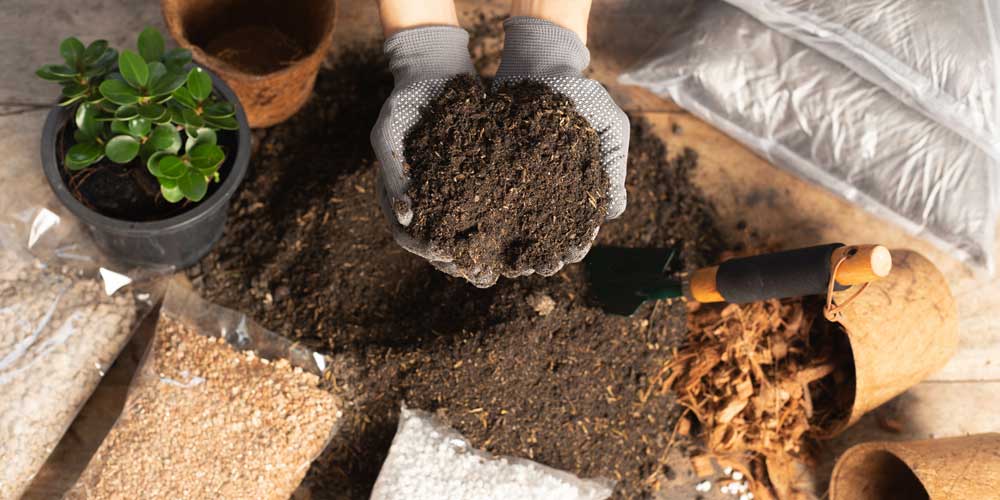
Learn how vermiculite can improve your soil, support healthy roots, and reduce watering needs in any garden space. Whether you’re growing herbs in pots, starting seeds on a windowsill, or managing raised beds in a compact courtyard, soil quality can make or break your gardening success. In this guide, you’ll learn how it works, when to use it, and how to mix it into your garden setup to boost plant health and resilience. Whether you’re growing vegetables, herbs, or flowers, this mineral is a powerful tool that fits easily into any garden style or size.
How to Use in the Garden
Gardening in small or challenging spaces often comes with issues like compacted soil or poor drainage. One simple solution? Vermiculite. This lightweight mineral is a powerful soil amendment that helps retain moisture, improve aeration, and support stronger plant roots.
What Is Vermiculite?

It is a naturally occurring mineral, typically sourced from regions with volcanic activity. When heated, it expands into airy, layered particles that are highly absorbent and lightweight—making it ideal for use in soil mixes.
It’s also sterile, non-toxic, and pH neutral, making it a safe and adaptable addition for a wide range of plants. Whether you’re growing leafy greens, herbs, or ornamental flowers, it can play a supportive role in boosting soil structure and moisture balance.
- Lightweight & Absorbent: Retains water while improving soil texture.
- Sterile & Safe: Naturally free from pests, pathogens, and mold.
- pH Neutral: Won’t alter soil acidity or nutrient availability.
Click here to find out more about vermiculite.
Vermiculite vs. Perlite: What’s the Difference?
Both are popular for improving potting mixes, but they serve slightly different purposes. Vermiculite holds water and nutrients exceptionally well, making it ideal for moisture-loving plants. Perlite, on the other hand, enhances drainage and is better for plants that prefer drier conditions.
| Feature | Vermiculite | Perlite |
|---|---|---|
| Moisture Retention | High | Low |
| Aeration | Moderate | High |
| Weight | Heavier | Lighter |
| Best For | Seedlings, moisture-loving plants | Succulents, fast-draining mixes |
Key Benefits of Vermiculite
Adding this mineral to your potting mix can lead to healthier, more resilient plants. Its ability to retain moisture helps reduce watering frequency, while the improved aeration supports strong root development. This is especially helpful in containers and raised beds where soil can compact easily.
- Reduces Watering Needs: Absorbs and retains moisture for longer periods.
- Boosts Root Health: Prevents compaction and supports aeration.
- Increases Nutrient Uptake: Helps plants access nutrients more efficiently.
- Safe for All Plants: pH neutral and non-toxic.
Practical Uses in the Garden
Vermiculite can be used in many ways, depending on your garden setup. Whether you’re sowing seeds, growing herbs in containers, or propagating cuttings, this mineral offers consistent support.
- Seed Starting: Mix with potting soil to maintain even moisture during germination.
- Potting Mixes: Improve drainage and root aeration in containers and raised beds.
- Soil Amendment: Loosens heavy clay soils and prevents waterlogging.
- Cuttings: Use damp vermiculite alone to encourage new root growth.
How to Use it Effectively
Here are a few mix ratios and usage tips to help you get started with vermiculite:
- Seed Starting Mix: 2 parts potting soil to 1 part vermiculite.
- Potting Mix: 3 parts soil to 1 part vermiculite.
- Clay Soil Amendment: Mix in vermiculite at planting time to improve drainage.
- Propagation: Use moist vermiculite alone for rooting plant cuttings.
Adjust ratios depending on the specific moisture needs of your plants and climate.
Choosing the Right Mix
Different plants require different moisture levels. Here’s a simple guide to help tailor your mix:
- Succulents and Cacti: Use a low proportion of vermiculite to avoid excess moisture.
- Leafy Greens and Herbs: A higher vermiculite content helps retain water and nutrients.
- Mixed Containers: Go for a balanced mix with moderate moisture retention.
Is Vermiculite Eco-Friendly?
Yes, it is mined from natural deposits and requires no chemical processing. It’s reusable, doesn’t break down into harmful substances, and is safe for organic gardening. You can reuse it in potting mixes, helping to reduce waste and improve sustainability in your garden.
Frequently Asked Questions
- Is it safe for pets and kids? Yes, it’s non-toxic and sterile.
- Can it be reused? Absolutely. Just sterilise and mix into fresh soil.
- Does it work with all plants? Yes, thanks to its pH neutrality and adaptability.
Conclusion: A Simple Boost to Better Gardening
Whether you’re growing herbs on a windowsill or cultivating vegetables in containers, vermiculite is a reliable tool that can make gardening easier and more effective. Its moisture-holding capacity, aeration properties, and safety make it a smart addition to any soil mix.
Try incorporating this mineral into your next planting project—you might be surprised by the results. Shop Now for Australian vermiculite, available in 5 litre and 100 litre bags.
